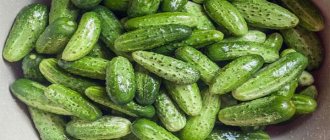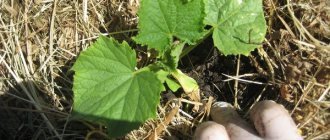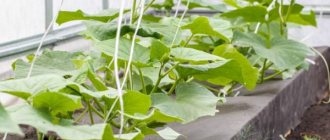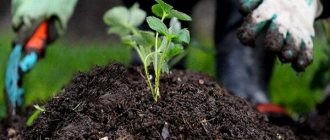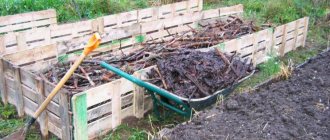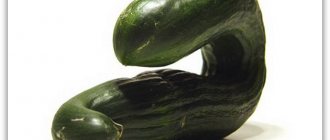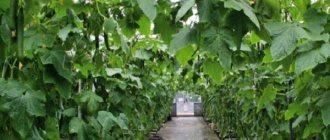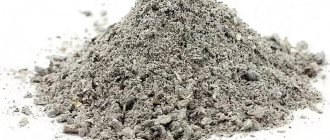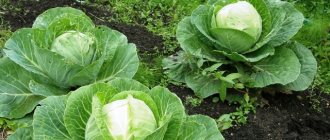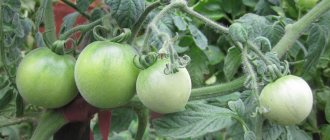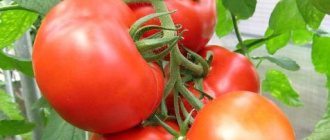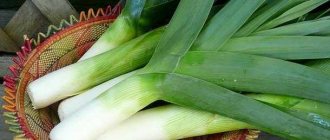General information
Planting cucumbers under covering material turns out to be the most acceptable solution because this plant is extremely capricious. This is quite predictable, because the cucumber was originally grown in hot tropical forests, where it was constantly damp and warm. Even in those regions that are considered warm by Russian standards, growing such plants is difficult and that is why they try to plant them under cover. The skillful use of modern technologies allows us to obtain stable yields almost everywhere. Moreover, the weather vagaries that are inevitable in some cases will not spoil them.
If the shelter is made according to all the rules of agricultural technology, you can sow seeds or move seedlings into free soil already in mid-spring. Let the frosts return, they no longer pose any danger. As a result, the receipt of the first collection is accelerated.
Additionally, they note such benefits from special shelters as:
- reducing the harmful effects of sunlight;
- moisture retention in dry weather;
- preventing invasions of various parasites and insects.
Getting ready to disembark
Greenhouse requirements
Before talking about how to grow cucumbers in a greenhouse, it is necessary to pay attention to the description of the design of greenhouses and greenhouses.
Temporary film shelter can be made according to different schemes, the main thing is that it meets the following requirements:
- Firstly, the frame must be covered with a material that will transmit sufficient sunlight. This is necessary to ensure the growth and fruiting of the planted cucumbers.
- Most often, ordinary polyethylene film is used for covering, but more experienced gardeners prefer special materials intended for greenhouses. Of course, their price is somewhat higher, but they do not degrade with prolonged exposure to ultraviolet radiation.
Advice! The best option is multilayer light-stabilized film or polycarbonate.
- The dimensions of the frame should allow plants to develop freely and gain phytomass. If you plan to install trellises, then you should make a structure with a high central part. To grow creeping varieties, a low but wide frame will be sufficient.
Design for trellis growing
- The main task of greenhouse film is to protect plants from low temperatures, morning dew and drafts. If there are gaps in the coating, the plants will begin to get sick, and the yield will decrease significantly. The tightness of the film cover is especially important in the first weeks of plant life.
- Despite the fact that greenhouses are often installed on the site itself, the beds require separate preparation. Of course, you can simply sow seeds or plant seedlings in dug up soil, but it is better to work hard and create the most effective substrate.
Read also: What can be grown in a greenhouse with cucumbers
Preparing the beds
After the construction of the structure itself, the construction of a greenhouse for cucumbers involves working on the formation of beds.
As we noted above, to obtain a good harvest it is necessary to take a number of measures:
- We divide the space in the greenhouse into sections about 50-60 cm . We must leave a gap of up to half a meter between them, otherwise maintaining our plantation will turn into sheer torture.
- Next, we take a shovel in our hands and excavate the soil to a depth of 25-30 cm . To protect the root system of cucumbers from the cold, fill the excavated space with straw almost to ground level.
Note! We don’t throw away the excavated soil, but carefully put it in a pile at the edge of the ridge - we’ll need it later!
Beds with high sides
- Place about 10-15 cm of manure . To prevent fertilizing from spilling over the edge, it is worth installing fences made of boards 25-30 mm and up to 25 cm .
- Having compacted the manure, we fill the beds with the excavated soil. We do not remove excess soil, but collect it in a small pile in the center of each bed.
- To increase soil fertility, the soil can be mixed with peat and annual manure before returning to the site.
All these activities pursue two goals: firstly, to form a layer of rotting organic matter that will release thermal energy, and secondly, to enrich the soil for planting with nutrients.
Varieties
When farmers realize that they, in fact, have no alternative to using a covering system, the next question logically arises - what to use? Now the solution to the problem is mainly:
- designs with a simple polyethylene film;
- film with air bubbles;
- reinforced polyethylene;
- polyvinyl chloride;
- non-woven material (spunbond).
The leading positions in the market are occupied by opaque fabric and film. They can even be combined with each other. In this case, the beds with seedlings are covered with a cloth that stops the destructive effects of cold and wind. The polyethylene film is already stretched over this canvas. Now it’s worth examining these options in more detail and clearly.
Polyethylene
Polyethylene films for covering plants are supplied in various designs. The main difference between them is due to the thickness of the protective material. There are options for 120, 200, 150, 30, 100, 60 microns. Unlike a number of other coatings, polyethylene with such parameters allows sunlight to pass through. It is elastic and does not allow moisture from the outside to pass through, and does not collapse if cold weather suddenly sets in.
It should be remembered that when growing plants that are susceptible to direct sunlight, it is advisable to use film covers of different colors with a diffusing effect. The ability to protect plantings from frost directly depends on density. But in any case, this protective function should not be taken into account.
But the fact that a denser film is also stronger is much more important.
Transparent material, for all its advantages, is easily damaged by ultraviolet rays, therefore, when choosing it, you need to give preference to light-stabilized coatings.
Non-woven
Non-woven spunbond is now no less popular than polyethylene. It allows you to form a shelter even without frames. This material does not harm the plantings and is soft. Even with close contact it does not deform the plants. The non-woven coating will allow light, air, and precipitation to pass through, and will not itself be destroyed by ultraviolet radiation.
The strength of non-woven fabrics is well known, but not everyone knows that such material restores its structure if it is sewn or glued together. Spunbond can be washed. It is permissible to water the cucumbers directly from above, without removing the cover each time. This significantly reduces the labor intensity of care.
But it is important to understand that the canvas will give a good effect only if the basic requirements of agricultural technology are met:
- choosing the right variety;
- normal soil heating;
- selection of healthy seeds;
- accurate assessment of the required film density;
- normal slope of the beds;
- protection from animals and birds (which mainly tear the covering material to get to the plants).
Which is better?
The decision to cover cucumber beds with your own hands logically flows into the search for an answer to the question - what is the best way to cover them? What’s important is that when answering it, you won’t be able to simply refer to the advantages and disadvantages of the two options already discussed above. If the goal is to save a vegetable from early frosts, it is recommended to use white spunbond stretchable on arcs. The most suitable non-woven material with a density of 0.023 kg per 1 square meter. m.
The permissible spread for this parameter is from 17 to 30 g per 1 square meter. m. For full-fledged winter shelters in the form of greenhouses with arcs, materials with a density of 42 to 60 g per 1 square meter are recommended. m.
When arranging greenhouses, film with multi-colored sides (white and black, respectively) also brings good results. The light edge should be at the top, it reflects excess light, and the dark surface makes it difficult for weeds to live. When choosing a classic polyethylene film, you should give preference to its reinforced varieties.
No other type of polyethylene will provide the same strength and resistance to mechanical damage. The reinforcing layer is located in the middle between the two main layers. Most often, a particularly strong film is also protected from ultraviolet radiation.
It is worth considering an alternative such as polycarbonate. It is difficult to find a coating more resistant to precipitation and gusts of wind. Bacteria do not multiply in polycarbonate, it is relatively light, mechanically strong and almost as good as glass in transmitting light. Another important circumstance is that polycarbonate does not catch fire. One of the disadvantages is that it is unsuitable for laying on the ground; it only allows for the construction of permanent greenhouses and hotbeds.
Covering and care technology
When preparing beds in the open ground, you should choose a well-lit and as warm place as possible, this is where it will be easier for the shelter to fulfill its task. The width of each strip is 0.7 m, and you need to dig deep with the bayonet of a shovel. Be sure to scatter organic fertilizers, selected as needed, and distribute them evenly with a rake along with the top layer. Then planting furrows are formed. A couple of ampoules of a liquid stimulating substance are dissolved in 10 liters of water at a temperature of 50 degrees and the area is thoroughly watered.
You should not plant seeds too often; 1 for every 0.5 m is enough. Covered cucumbers need to be watered once every three days, only with warm water. At least once a week, if the weather is warm, the shelter is raised to add light.
Feeding usually begins in May, but be sure to wait until the air during the day is no cooler than 20 degrees. The best fertilizer for a covered vegetable is sodium humate: 30 g is diluted in 10 liters of water and 8 liters of the prepared solution is poured onto 1 square meter. m of plants, and bird droppings are added once a month for additional fertilizer.
To provide complete shelter, it is necessary to install an arc support. Moreover, there should be several arcs at once; they are placed at an equal distance from each other. The canvas should be thrown over at night, covering it on top with polyethylene hanging down to the surface of the ground. These edges are pressed down with bricks, boards, pipes without sharp parts. Then neither air nor various animals will penetrate inside.
The recommended height of the arches is approximately 1 m. In mild frosts and calm weather, when the sun shines moderately, a simple non-woven fabric is enough for protection. In the summer, it is better to avoid plastic film. But protective sheets will still have to be used in the heat to protect from the sun. Occasionally, shelters are placed in the autumn months if early frosts began before the last harvest.
How to grow early cucumbers?
Growing cucumbers in a greenhouse is not such a difficult task. But you still need to follow a few simple rules.
How to make beds?
The secret to an early harvest of cucumbers in a greenhouse is the special preparation of the beds. You should start cultivating them as soon as the snow melts from the area.
For better illumination of plants, a greenhouse is arranged in a west-east direction . When warm weather sets in for the day, the film is removed from the south side, and the cucumbers will receive maximum sun.
The most effective way to grow cucumbers “warm bed” for planting them . This will allow you to plant vegetables in the ground at an earlier date, which means getting an early harvest.
From the formed ridges of the required length, remove the top layer of soil using two shovels. The bottom layer measuring 20-30 cm is filled with straw, hay or small branches. This filling will begin to actively overheat within a month, which will provide warmth to the plants. To increase the rate of decay and increase the heating temperature, manure is placed on this layer with a layer thickness of 15-20 cm . The top of the insulating layer is sprinkled with fluff lime to reduce acidity.
The previously removed soil is placed on the compacted warm cushion. All the soil is poured onto the bed, making a high bed . During the process of growing cucumbers, the soil will settle by 20-30%, because the substrate will become compacted and decrease in height.
A warm bed for vegetables prepared in this way will serve as a heater and a nutrient layer for them. The harvest of cucumbers in a warm garden bed is several times higher than in conventional cultivation.
Read also: What tomatoes can be grown on a windowsill in an apartment
For additional nutrition, wood ash is added at the rate of 50 g. per square meter, superphosphate 150 g., potassium sulfate – 50 g.
Seedlings or in the ground?
The question of whether it is worth sowing cucumber seedlings at home and then planting them in a greenhouse does not have a clear answer .
This vegetable has a weak root system that does not respond well to transplantation. The sucking hairs that nourish the plant are not restored when broken, and the cucumber begins to absorb moisture only when new ones grow, so the seedlings do not take root well . But if you still decide to get the harvest a couple of weeks earlier, you can try.
Sowing is carried out in cups without a bottom, so that when transplanting, the plant can be pressed together with a lump of earth into the prepared hole. You can use newspaper cups, which are planted without freeing the roots from the newspapers.
Rolled newspapers or cups without a bottom are placed tightly in a box and filled with soil. You can use ready-made special soil for pumpkin plants. The mixture is prepared independently from two parts of soil, one part of peat and half of sand.
Before sowing, soak the seeds in water heated to 45-50 degrees with the addition of a small amount of potassium permanganate (the solution should be medium pink). This procedure will help disinfect the seeds and warm them for better germination.
The heated seeds are buried 2 cm in cups, the box is covered with film and placed in a warm place. In about five days the first shoots will appear.
An important procedure when growing seedlings is hardening.
Cucumbers grown indoors without hardening do not tolerate sudden changes in growing conditions.
In order to accustom cucumbers to lower temperatures. You can open the windows and take boxes out onto the balcony. At night, the optimal temperature is 15-16 degrees .
When to plant?
The timing of planting cucumber seedlings in a greenhouse is of no small importance for obtaining an early harvest. The age of seedlings for planting in a greenhouse should be 20-25 days . At the time of planting, the soil should warm up to 16-18 degrees, this happens around mid-May. Around this time, you can sow cucumbers directly into the greenhouse. If you have prepared a warm bed, you can sow vegetables two weeks earlier. For sowing, prepare holes and place 2-3 seeds in them at a time. The distance between the rows when planting should be from one to one and a half meters , and in a row the plants are planted 20-30 cm apart.
When growing seedlings in newspaper glasses, you need to remove the bottom from them and place the sprout together with the walls in the hole. The roots will pierce the sodden newspaper easily, but with such planting they will not be damaged. Plastic cups are placed in the hole and, holding the lump of earth with one hand, carefully remove the glass with the other hand upwards.
After planting cucumber seedlings in a greenhouse or sowing seeds, the holes are watered and necessarily mulched to prevent crust formation. To prevent the growth of weeds between the rows, the soil is covered with black film or opaque fabric. This technique is necessary, since in a greenhouse it is quite problematic to weed the rows when cucumber vines grow.
Forming bushes
When grown in greenhouses, cucumbers can be grown creeping on the ground or tied to a frame.
The purpose of the garter is to direct the growth of the lashes so that they do not spread beyond the ridges.
The main stem of the cucumber is pinched after the fifth leaf grows . After pinching, the plant begins to actively grow side shoots.
Pinching is necessary. Since fruit ovaries are formed mainly on the lateral stems.
You can see and hear additional information on how to grow early cucumbers in a greenhouse in this video:
How to improve greenhouse heating?
If your greenhouse does not have a warm cushion, you can increase the temperature in it using some techniques:
- Poultice. It is carried out after morning watering. After watering the plants, the greenhouse closes for 2 hours in the spring and for half an hour in hot weather in the summer. At the same time, the temperature in the greenhouse rises sharply, which promotes the growth of cucumbers.
- Use of solar heat. The essence of this method is to let heat into the greenhouse and not let it out. Retention is facilitated by the quality of the material used for shelter and the location of the structure. It should be spherical and located in such a way as to receive maximum sun exposure from the south side. The northern wall of the greenhouse should be covered with foil or opaque fabric. In this case, the heat coming from the south will not escape from the structure.
- Bottled water. Plastic bottles are filled with water and placed around the perimeter of the greenhouse, lightly buried in the ground for stability. During the day, the sun heats up the water. And at night, evaporating, it gives off heat to the plants.
All these simple techniques will help you obtain consistently high yields of cucumbers in a greenhouse on your plot without large material costs.
What covering material is best for cucumbers in open ground?
As the summer season approaches, many begin to think about how to grow vegetables in their garden plots while achieving maximum yields. The most pressing issue is growing cucumbers - a rather capricious crop. To minimize negative phenomena, many use special covering material. This technology has made it possible to grow this vegetable even in cold climates.
borage frame
After the box is ready, you need to make a greenhouse frame. The role of the front wall will be performed by polycarbonate sheets. They are installed in homemade door frames made from electrical wiring pipes with a diameter of 20 mm.
To ventilate the greenhouse, you can provide vents. They are made from the same pipe, using the same technology as door frames. The vents are secured to the door frames using hinges.
Read also: What can be grown profitably in the Krasnodar region
To make external arcs, use a polypropylene pipe with a diameter of 32 mm, which is given a semicircular shape using a soldering iron for polypropylene pipes. The arcs are secured to the wooden body with hardware. To strengthen the structure, additional supports are made from electrical wiring pipes. They are screwed to the main arches.
When the arcs are ready, holes are made in them to secure the agrofibre. Fasteners for covering material can be made from electrodes.
Why do you need black covering material for cucumbers?
The culture is rightfully considered one of the finicky ones, although it is traditionally planted by every owner. The plant does not tolerate cold and strong shade , but it can also burn under strong sunlight.
Of no small importance is the humidity parameters of soil composition and air, which must be maintained mainly artificially. There are still a sufficient number of conditions that are necessary to obtain decent yields.
This allows you in the middle of the spring season without fear of any late frosts.
Covering with film allows you to plant seedlings in the ground already in mid-spring
The use of covering material immediately eliminates a number of problematic issues. If you cover the cucumbers, the planting season can begin a little earlier than usual, and the first harvest will arrive faster, because the plants will be reliably protected from wind and frost .
The protective film reduces exposure to sunlight, increases humidity, and reliably protects the beds from harmful parasites and diseases that can destroy plants.
Covering materials are different. Today the market offers consumers:
- reinforced polyethylene film;
- air bubble film;
- PVC film;
- non-woven “spunbond”;
- plain polyethylene.
Advantages and disadvantages of using spunbond when growing cucumbers
The soft and lightweight covering material does not injure the crop and perfectly transmits light, air currents and moisture to the ground. It is resistant to ultraviolet rays and accumulates heat, protecting plants from harmful radiation. Can be used in greenhouses as a second shelter. It is easy to use and does not require large financial expenses.
Watering is carried out along its top . It should be added that the film is resistant to damage, it can be stitched, glued and even washed if necessary.
You can cover cucumbers with soft material without using a frame.
But at the same time, the canvas is not a panacea for all negative phenomena . Much depends on how correctly the variety of cucumbers for growing is chosen and how the soil is warmed up.
The density of the film and even the slope of the beds also influences. In addition, cucumbers require pollination, so the fabric will have to be removed in the morning and put on again in the evening. Protection should be provided from dogs and crows - the main sources of ruptures.
Types of black covering material
According to its origin, it can be divided into two groups - organic and inorganic .
As a rule, inorganic materials not only cover plants, but also perform decorative functions. These include:
- slate;
- gravel;
- crumbs of stone, granite, marble;
- crushed stone;
- multi-colored synthetic materials.
Black polyethylene should be highlighted in a separate line . Holes are made in it to add water and fertilizer compounds to the soil. The film retains heat perfectly, warming up the beds.
Agrotextile fabric is another interesting option. A special type of material is often used in agriculture. It is used in greenhouses and open beds. With its help, moisture in the soil is perfectly retained and protection against pests is created.
Organic species include the following:
- compost from garden waste;
- rotted leaves;
- rotted manure mixed with straw;
- shavings, tree bark, sawdust;
- pine needles, peat chips;
- mown grass.
Mown grass as a shelter for cucumbers
Which material is good and how to choose
Before purchasing material for protecting beds, it is necessary to study the characteristics of each of the known types.
from frost . They perfectly allow moisture and air to pass through, are light in weight and quite durable. Their main difference is thickness.
The thinnest ones can be laid directly on the seedlings, pressing down the edges. The thicker one is suitable for arranging small greenhouses.
In addition, the material must provide reliable protection against harmful insects that threaten your harvest.
Black films, tightly laid on the beds, will prevent the development of weeds .
Preparing beds in open ground
The ridges are prepared in advance, the place should be lighted and warm. Their width is seventy centimeters ; you need to dig to the depth of a spade bayonet .
The width of the beds should be about 70cm
After this, organic fertilizers, compost, and humus are scattered over the surface. The top layer of soil is leveled with a rake. Now you can make furrows for sowing cucumbers.
Features of care
In the spring, the material will reliably protect from frost, and in the summer it will save you from the heat. But the conditions necessary for the normal development of cucumber plants should be maintained.
Watering cucumbers under film is carried out 2 times a week
Having planted a crop in early April, you should not water frequently. This procedure twice a week using warm water is enough. The film should be lifted once every seven days in sunny weather to give the seedlings additional light.
In May it is allowed to start feeding , but during the day the temperature should be about twenty degrees Celsius, not lower.
It is best to use sodium humate for this, which is dissolved in water at the rate of one spoon per bucket of water. The solution is consumed in the amount of eight liters per planting square. Bird droppings are used as fertilizer once a month.
Protection can significantly increase the possibilities of growing cucumbers in different climatic conditions. A properly selected covering product will make it possible to increase productivity and reduce labor costs for caring for beds.
When to plant cucumber seeds for seedlings
peat cups are very convenient because...
cucumber does not like picking. Each gardener chooses the method of growing cucumbers based on his capabilities. Sometimes the area of the plot does not allow installing a greenhouse, or there is not enough money for it. In the middle zone and in the south, cucumbers can be successfully grown in open ground using specially designed varieties.
For polycarbonate greenhouses
The advantages of polycarbonate include its durability, low cost, and practicality. This material is very light, so a massive foundation is not required when installing a greenhouse. Despite its external fragility, polycarbonate is resistant to mechanical stress. It can withstand snow pressure in winter and summer hail.
The material is easy to care for; polycarbonate can be washed with ordinary soapy water. All of these advantages have led to the fact that today greenhouses made from this material are used most often. The ideal age of seedlings for transplanting into a greenhouse structure is 3 weeks. By this time, the plants should have strong stems and leaves of a rich emerald color. The ideal height of the bushes is about 30 cm.
On a note! If you are going to use your own seeds for sowing, keep in mind that for full germination they need to sit for 2-3 years. Last year's seed material is not suitable for planting.
The approximate date for planting seedlings in a greenhouse in the middle zone is May 10. From this date you need to count 3 weeks ago. This time period is necessary for seed germination, emergence and further development of seedlings. We find that the sowing date should be April 19-20. Those who adhere to the Lunar calendar can make small adjustments according to its recommendations.
Gardeners must also make allowances for weather conditions and the growing region.
For open ground
In the middle zone, the optimal time for transplanting seedlings into the ground is at the end of May. It is by this time that daytime temperatures reach 20 degrees and above, and at night the temperature never drops below 15-17 degrees Celsius. Following the air, the top layer of soil also warms up. In the last days of May, the soil temperature at the planting depth reaches 12 degrees.
On a note! If the seedlings are already ready to be planted in the garden, and the weather suddenly turns bad, plant the cucumbers under a film cover. Once conditions are optimal, the film can be removed.
Some summer residents use five-liter plastic bottles with a cut bottom to grow cucumbers in open ground. Each bush is covered with these containers, creating a kind of mini-greenhouses. On sunny days, the caps on the bottles are unscrewed to ventilate the plants. Using this method, you can plant cucumbers 1-1.5 weeks earlier than usual.
Rules for growing cucumbers under spunbond
Recently, some summer residents have adapted to growing cucumbers under spunbond, preferring this method to the usual one. In particular, this method of cultivating vegetable crops is suitable for those who live in areas with cold climatic conditions. Growing cucumbers on spunbond, with the correct use of this method of cultivating vegetables, gives high yields and provides optimal conditions for the growth and development of cucumber bushes throughout the calendar year.
Description of the method
Agrofibre, or spunbond, is an alternative to the well-known polyethylene, which gardeners have been using to cultivate vegetables for many years. This material is made from an environmentally friendly polypropylene component that has a fine fibrous structure.
The essence of the method of growing cucumbers on spunbond is to create a favorable climate for plants at cold air temperatures and insufficient sunlight in northern regions with short summers and at the same time at elevated temperatures in areas with soaring sun.
Types of spunbond
Spunbond for agricultural needs can be used in several types:
- white material, which is used in open soil conditions, its density is 17-30g per 1 sq.m,
- white polypropylene with a density of 30 to 60 g per 1 sq.m, used for greenhouses and greenhouse structures,
- black, the density of which is from 50 to 60g per 1 sq.m, used for mulching soil,
- black and white spunbond with a density of 50g per 1 sq.m, intended for mulching directly vegetable crops and for the purpose of growing berry bushes in beds; its black layer has a protective property against weeds, and the white one serves as a reflector of sunlight and preserves the root system of plants from overheating,
- white-red, yellow-red materials that protect vegetable crops from bad weather.
Pros and cons of the method
Among the main advantages of using spunbond when cultivating cucumbers and other vegetable crops:
- softness and lightness of the material, which when covering the bushes does not damage or injure them,
- light transmittance of polypropylene, which makes it possible to provide plants with a sufficient amount of light, while preventing overheating,
- air and moisture permeability, which provides ventilation under the covering material and allows water to enter the soil,
- UV resistance,
- ability to accumulate and retain heat,
- ease of use, wear resistance and relatively cheap price.
During use, spunbond can be washed, glued and stitched, which gives additional advantages when using it on a personal plot. At the same time, it is possible to cover cucumber bushes with polypropylene material even without creating frame structures.
You can water the plants without removing the covering material, right on top of the spunbond. Under the fabric, all the weeds, without receiving sunlight, begin to rot and rot into a natural fertilizer useful for cucumbers. This eliminates the weeding process.
The only disadvantage when growing cucumber varieties without self-pollination is the need to remove material in the morning during the formation of ovaries and cover the cucumber bushes with it in the evenings.
The role and main advantages of film coatings
Film for covering plants can be used in two ways: covering the soil and making special frame structures covered with film. In the first case, the film protects the soil from low temperatures and the appearance of weeds, helps retain moisture, and protects from rain and hail. But cucumbers grow horizontally.
In the second case, under the frame device covered with film, there is some space in which a greenhouse effect is created; in addition, such structures allow you to grow cucumbers even vertically.
The second option is undoubtedly more convenient, what are its advantages:
- Convenience of design. That is, having done it once, you can use it for several years, while changing the covering material, since the film is deformed under the influence of street factors.
- It is enough to move the film device to a free place nearby or fold it back, if this is intended, and carry out agrotechnical measures on the cucumbers. Or remove it on a hot day.
- In this case, polyethylene has many alternatives: agrofibre, spunbond, PVC film and others, which are stronger and more durable.
The only disadvantage of using film is its weight and size, but this can also be eliminated if you make a folding shelter.
White polypropylene
White spunbond allows more light to pass through
White spunbond is most often used by gardeners instead of the usual polyethylene film cover. They can be used to cover cucumber bushes planted with seeds or seedlings in a greenhouse or on open ground. Some people use white spunbond to build fabric greenhouses.
To create a structure in the form of a greenhouse, you need high-density white spunbond that will withstand the wind.
White spunbond with a low density of 17g transmits 80% of light. A white covering material with a maximum density of 60g is capable of transmitting 65% of light.
For light-loving varieties
Plants with seeds of light-loving varieties of cucumbers are covered with white fabric material. In this case, material with a density of 17,19,23 g per 1 sq.m. is used. It can be used both for sowing and for already grown seedlings.
When using such thin white material, we must not forget that it has low frost protection:
- fabric density of 17g can protect plants down to -3°C,
- 19g spunbond protects plants from frost not lower than -4°C,
- material with a density of 23g can withstand temperatures down to -5°C.
For shade-tolerant varieties
For the purpose of laying on the bed and to create a greenhouse effect, white spunbond is used, the density of which starts from 30 g and reaches 42 g per 1 sq.m. In this case, the first density is applicable for covering arcs up to 30-35 cm high, and the latter is used for greenhouse tunnels of greater height.
Agrofibre with increased density can create protection for plants when temperatures drop to -6°C, maintaining integrity during wind and precipitation in the form of snow and hail. However, they transmit less light, therefore they are suitable for those varieties of cucumbers that are shade-tolerant.
For heat-loving varieties
In unfavorable climate regions, summer residents use white spunbond with a maximum density reaching 50-60g per 1 sq.m. This agrofibre can protect plantings from strong winds and frosts down to -10°C. It is intended for heat-loving cucumber varieties.
What is better to protect cucumbers: film or material?
Experts do not give a clear answer to this question: what is the best way to protect cucumbers, because both film and non-woven fabric have pros and cons. When choosing, you should consider the purpose of use. Many summer residents prefer non-woven products to protect vegetables from wind, frost, insect pests, and the rays of the scorching sun. Advantages:
- failure to create a greenhouse effect;
- high moisture and air throughput;
- reliable protection against the onslaught of pests;
- an excellent barrier to the rapid growth of weeds;
- no need to remove material for the purpose of ventilation and watering of seedlings.
Cucumbers under protective non-woven material
Cucumbers Temp
Cucumber seedlings are preferably grown under black spunbond, so as not to be afraid of the plants overheating from the scorching rays of the sun in hot weather. Although, of course, PVC film also has its advantages:
- creating a greenhouse effect;
- heat accumulation throughput;
- light transmittance;
- frost protection;
- high wear resistance.
Note! It is reasonable to use the film to create a greenhouse for seedlings and accelerate soil warming in early spring. If the purpose of using a covering product is to protect cucumbers from overheating or weeds and create soft contacts with plants, then, of course, it is reasonable to use non-woven fabric.
